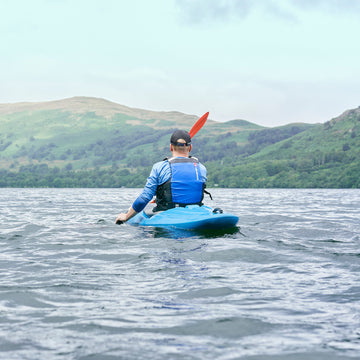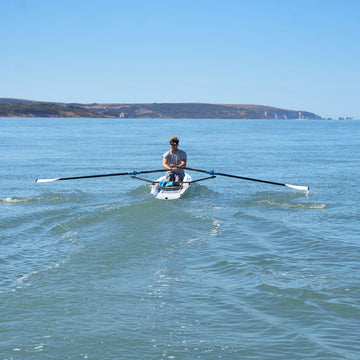Field application of SpeedSIX HydraPRO

SpeedSIX HydraPRO comes if two handy sizes either a 100ml tin (enough for most dinghies) or a 500ml version (suggested for keelboats). The product comes in a quality aluminium screw-top container (the 100ml on test here) which is suitable to cover most dinghy hulls. The boat in question to have the product applied was an FRP Solo (LOA 3.78m). First job before applying the product, is to ensure that the hull is completely clean, degreased and any residue, dirt or grime is removed.

Fig 1 Photo of hull before cleaning. To assist with the clean up, I used a bike product called ‘Muc-off’ (a pink cleaner that is biodegradable, free from acids, CFC’s and solvents etc), and this was sprayed on and then washed off with clean water and a sponge. The hull was then completely dried using a microfiber towel.

Fig 2 Initial cleaning and drying of the hull. It must be remembered that SpeedSIX HydraPRO will not remove scratches or imperfections in the hulls surface. SpeedSIX HydraPRO is not abrasive, it is simply a top/final coating applied to reduce friction between the hull and the water surface. For best results, it is therefore recommended that the hull is in good condition and any work to remove scratches, marks, dents etc is done beforehand.
It is suggested that a product such as G3 is used to remove any small scratches or imperfections beforehand, and then cleaned and polished accordingly

Fig 3 Use a clean, dry cotton cloth with SpeedSIX HydraPRO. The day of application was quite an overcast day with an air temperature approx. 12°C and dry. It is suggested that you wear a quality pair of Latex gloves when using any cleaning or polishing product. Shake the container well. The SpeedSIX HydraPRO product is very thin and has an interesting smell! Use a dry clean cotton cloth (lint free) to apply the product in a circular motion. Apply to a small area at a time. A small amount of the liquid goes a long way - you don’t need to use a lot of it, in fact, the 100ml tin would easily cover a Solo, RS Aero, Laser or similar size dinghy, and you would have some left over for the foils etc. Allow the applied coating to dry. As it was a particularly cold day I left the product to dry for about 15-20 mins and then, used another new cotton cloth to polish the dry residue. The result was a good clear, glossy, shiny hull.


Fig 4 The final polished hull & centreboard The boat remained on each side for at least 2 hours before putting back onto its trolley. It was noticeably ‘slippery’ on the cradle when putting it onto the trolley and when slightly moving it around. As a further long-term test, I applied SpeedSIX HydraPRO to a small area on the transom of a small keelboat, in particular, on the waterline area. Keelboats that are kept on some estuary moorings tend to get a brown ‘stain line’ just above the waterline and can be quite difficult to remove at the end of the season. I applied a small amount of SpeedSIX HydraPRO to the waterline area, and it will be interesting to see if this reduces any future staining.

Fig 5 SpeedSIX HydraPRO was applied to the waterline area of a keelboat In conclusion, the product is good value, and a little of the liquid goes a long way. It gives a good glossy finish, very easy to apply and to remove any surface residue left. It is quite a thin liquid and should be applied sparingly to your hull. Remember, it does not remove scratches, imperfections or would not rejuvenate a faded gelcoat surface. Any such remedial work would have to be done before applying the SpeedSIX HydraPRO product.















 Select Store
Select Store
 EU
EU
 US
US
